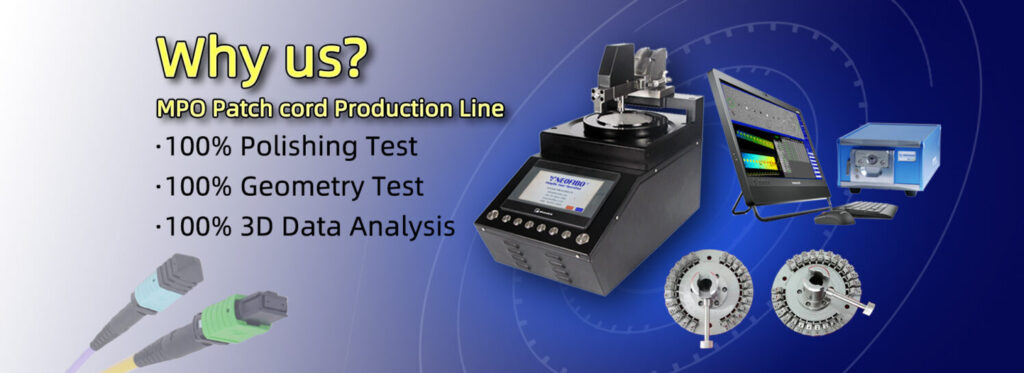In today’s age of cloud computing and HD video streaming, the push for ever increasing bandwidth and ever decreasing footprint of communication equipment has been relentless. While fiber optic networks are inherently superior to copper in accommodating these requirements, they do pose specific challenges to the network infrastructure design and installation in particular.
A major challenge has been to effectively manage high-density fiber networks and facilitate a high volume of fiber connections between optical networking equipment and components within ever-tighter space constraints. For this purpose, the MPO connector format was developed and ultimately standardized by the International Electrotechnical Commission (IEC) in 1996. Compared to the single and dual fiber LC and SC connectors, the multi-fiber MPO (multi-fiber push-on) design significantly reduces the amount of time, effort and space required to deploy fiber network technologies.
While the MPO connector has been an integral part of data center implementations ever since, improvements to the original design resulted in the MTP (Multi-fiber Termination Push-on) connector. To ensure seamless and even faster deployments, the MTP connector was the first MPO connector to be factory-engineered to appropriate cable lengths. This meant less skill requirements for installation, better quality assurance and simplification of future additions or changes to the optical infrastructure. Ground-breaking at the time but the innovations introduced by the MTP connector eventually became industry standard. The MTP® connector is still evolving and the most technologically advanced multi-fiber connector on the market today, rivaling loss rates that single-fiber connectors saw merely a few years ago!
While MTP cable connectors and adapters provide significant enhancements over MPO, they are fully backward compatible with generic MPO Cable connectors and seamlessly integrate into existing MPO network designs.
As the industry acronym for “Multi-fiber Push On”, MPO is developed to provide multi-fiber connection in one connector to support higher bandwidth and higher density applications. MPO connector is standardized in the international regulatory framework (the IEC 61754-7 standard) and the U.S. (TIA-604-5 Standard ). At present, the most common fiber counts are 12 and 24, and 48 to 72 fiber counts are also possible in limited applications.
MTP is a registered trade mark of US Conec. In other words, MTP connector is used by US Conec to describe their multi-fiber connector initially. Now MTP is commonly referred to as a high performance MPO connector. So MTP connectors are fully compliance with all generic MPO connectors and can interconnect directly with other MPO based infrastructures.
As mentioned above, MTP connector is an enhanced version of MPO connector. This means Generic MPO connectors are limited in performance and are not able to offer the high performance levels of MTP connectors.


-300x89.png)


